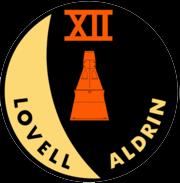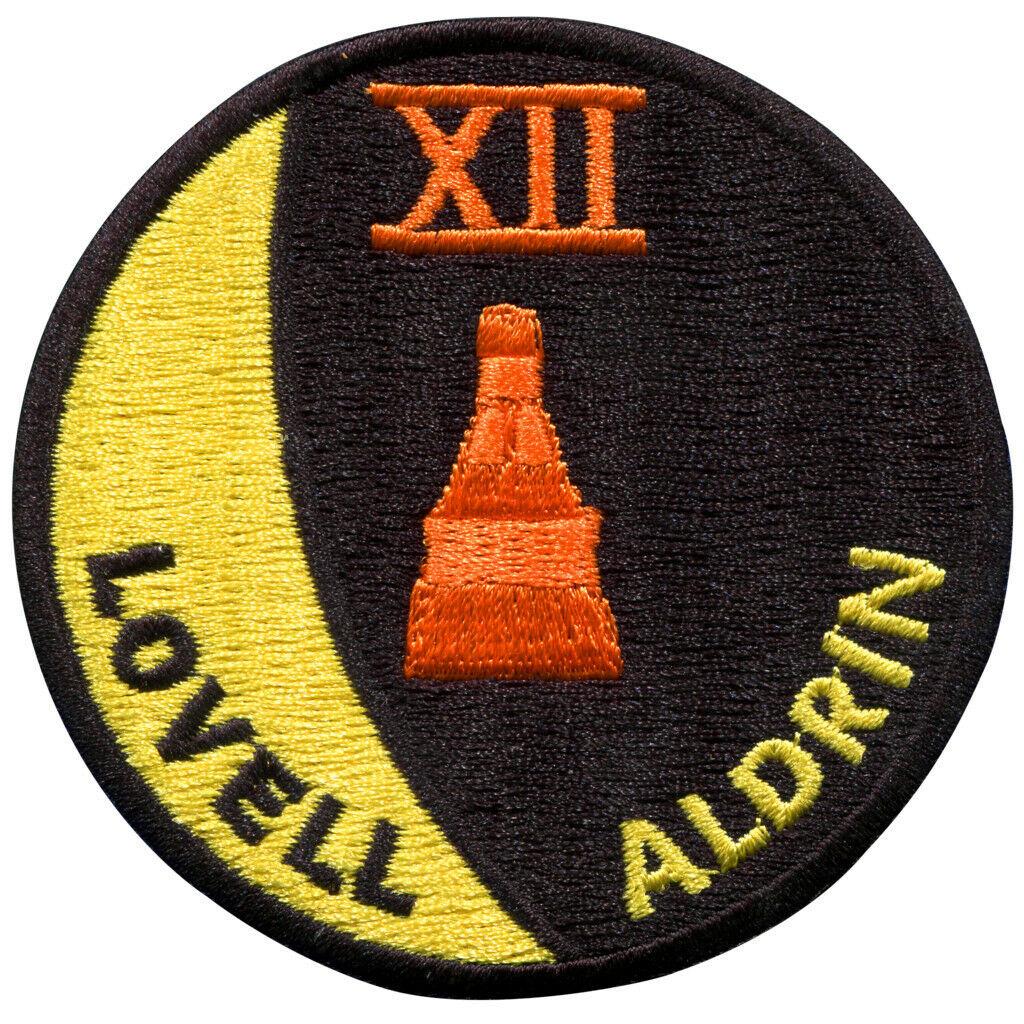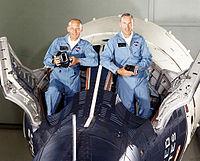James A. Lovell Jr.
Edwin E. Aldrin Jr.
Backup Crew:
Command Pilot: NL. Gordon Cooper Jr.
Pilot: Eugene A. Ceman
Support Crew:
Stuart A. Roosa (Cape CAPCOM)
Charles Conrad Jr. (Houston CAPCOM)
William A. Anders (Houston CAPCOM)
Gemini 12 (officially Gemini XII) was a 1966 manned spacecraft in NASA's Project Gemini. It was the 10th and final manned Gemini flight, the 18th manned American flight and, including X-15 flights over 100 kilometres (62 mi), the 26th spaceflight of all time.
The Gemini Programme at this point in time was preparing for the gateway and transition to the Apollo Programme and the landing on the Moon..
(Second Space Flight)
Pilot
Gemini Space Missions
(First Space Flight)
Astronauts:
Study
Research
Main Index
Space Cosmology
Science Research
*
About
Science Research
Science Theories
Desk
Site Map
BookShelf
Copyright © by Nigel G Wilcox · All Rights reserved · E-Mail: ngwilcox100@gmail.com
Designed by Nigel G Wilcox
Powered By AM3L1A
Pages within this section: Gemini Manned Space Flights
Gemini 12
Pages within this section:
8
M
8
SM
Sub-Menu
menu
-
9
10
11
12
Gemini 12
Command Pilot:
Gemini Space Missions

At the completion of the previous Gemini flight, the program still had not demonstrated that an astronaut could work easily and efficiently outside the spacecraft. Prior to the Gemini XII mission, other astronauts from previous missions of the Gemini Program had attempted EVAs. However, their successes were limited due to a lack of proper restraints and insufficient techniques. In preparation for Gemini XII new, improved restraints were added to the outside of the capsule, and a new technique—underwater training—was introduced, which would become a staple of future space-walk simulation. The main purpose of the Gemini XII mission was to find and test new ways to work outside of a spacecraft safely and effectively. Aldrin's two-hour, 20-minute tethered space-walk, during which he photographed star fields, retrieved a micrometeorite collector and did other chores, at last demonstrated the feasibility of extravehicular activity. Two more stand-up EVAs also went smoothly, as did the by-now routine rendezvous and docking with an Agena which was done "manually" using the onboard computer and charts when a rendezvous radar failed. The climb to a higher orbit, however, was canceled because of a problem with the Agena booster.
During orbital injection, the GATV engine experienced a drop in turbopump speed lasting about 2.5 seconds. After this, pump performance returned to normal. Telemetry data indicated erratic pump speeds, but engine performance did not reflect this. The anomaly was later found as a brief 30 psi drop in the thrust chamber of the rocket. The mission had planned for an orbital maneuver into a higher orbit but the drop in pressure raised some concerns. Ground controllers decided not to risk the planned orbital boost maneuver since the exact reason for the pump slowdown was unclear. Following Gemini 12's reentry and during the GATV's 63rd orbit, they attempted to fire the propulsion system, but a stuck fuel valve prevented engine start from occurring.
It was suspected that a turbopump bearing failure caused the anomalous conditions during orbital injection, followed by heating and melting of pump components. The inability of ground controllers to start the engine during the 63rd orbit was possibly due to melted or loose debris blocking the fuel valve and preventing its operation. The telemetry data falsely reporting erratic pump speed was concluded to be debris being knocked around and affecting the data probes.
The 1994 book and documentary Moon Shot, as well as the 2008 documentary When We Left Earth: The NASA Missions, credits the spacewalk innovations, including the underwater training, to Aldrin himself.
Gemini 12 was designed to perform rendezvous and docking with the Agena target vehicle, to conduct three extra-vehicular activity (EVA) operations, to conduct a tethered stationkeeping exercise, to perform docked maneuvers using the Agena propulsion system to change orbit, and demonstrate an automatic reentry.

















